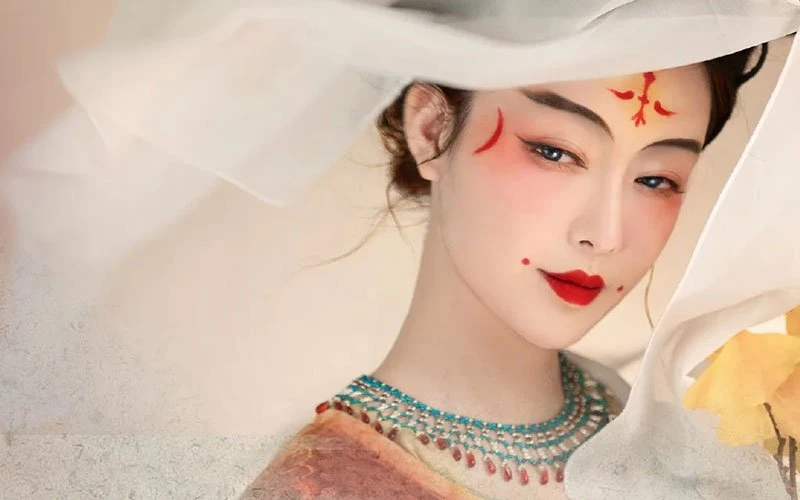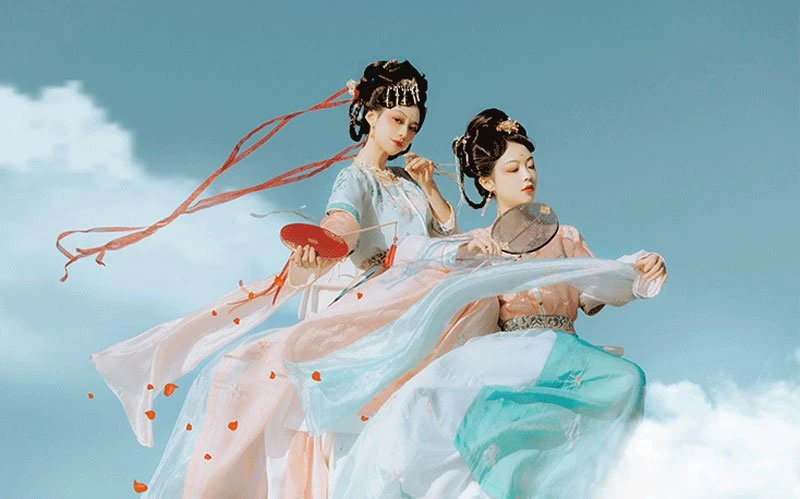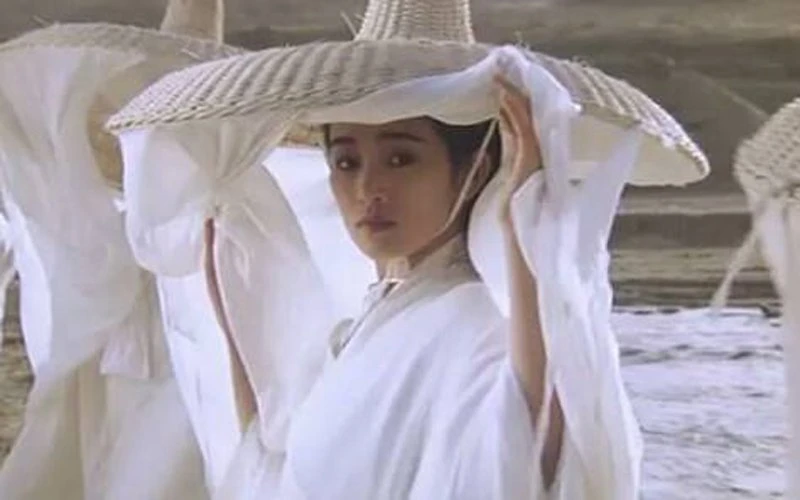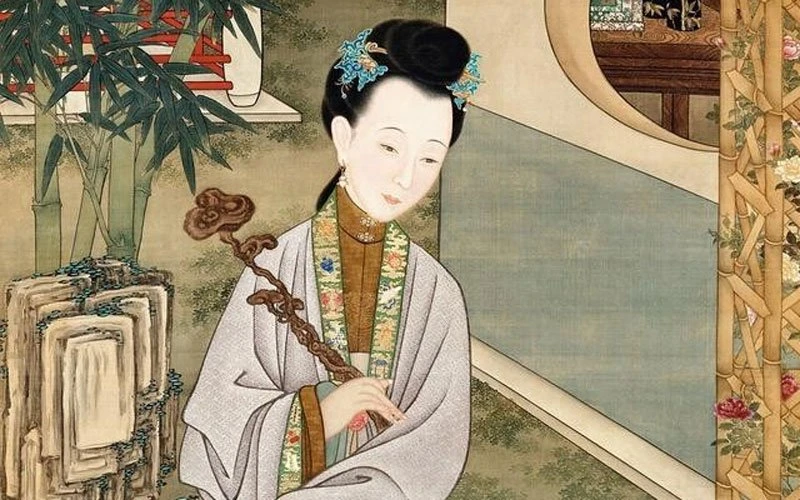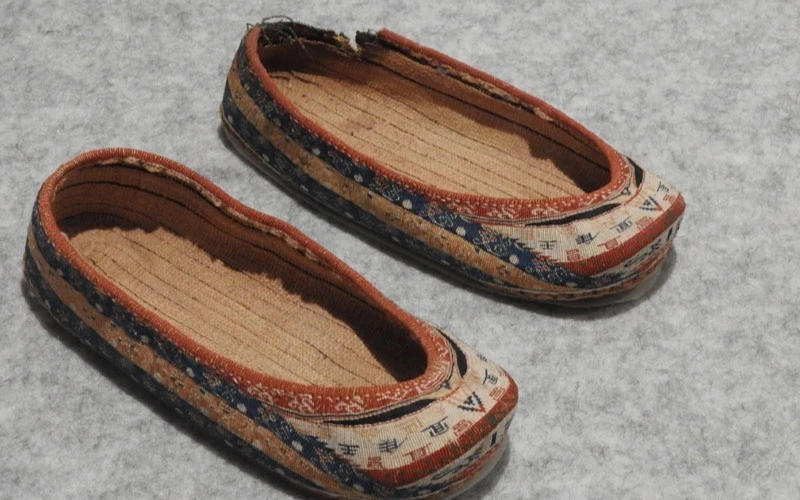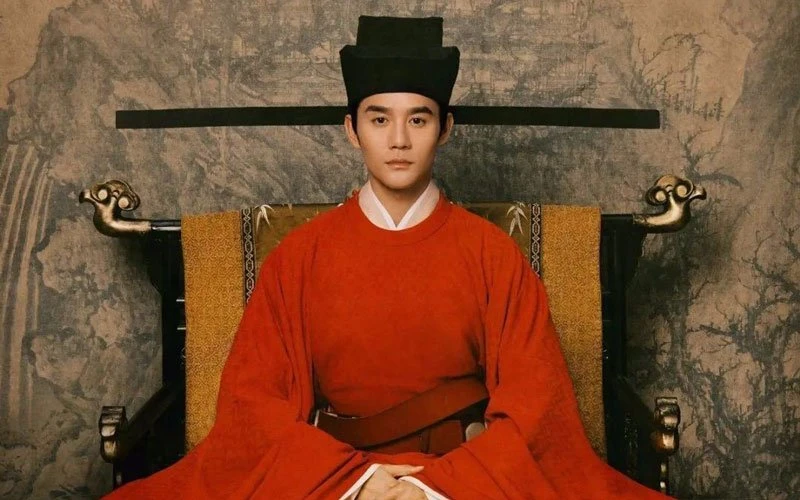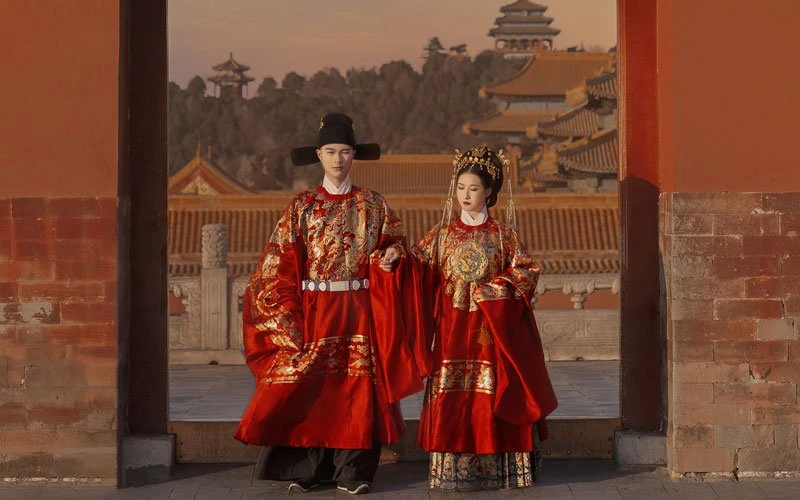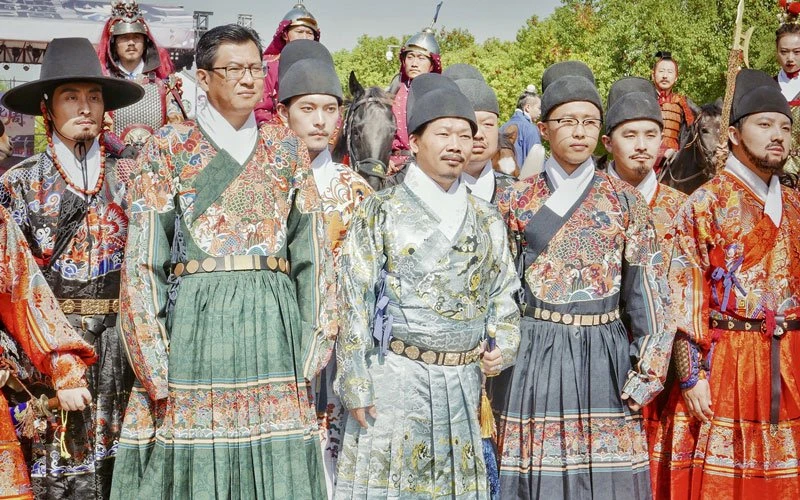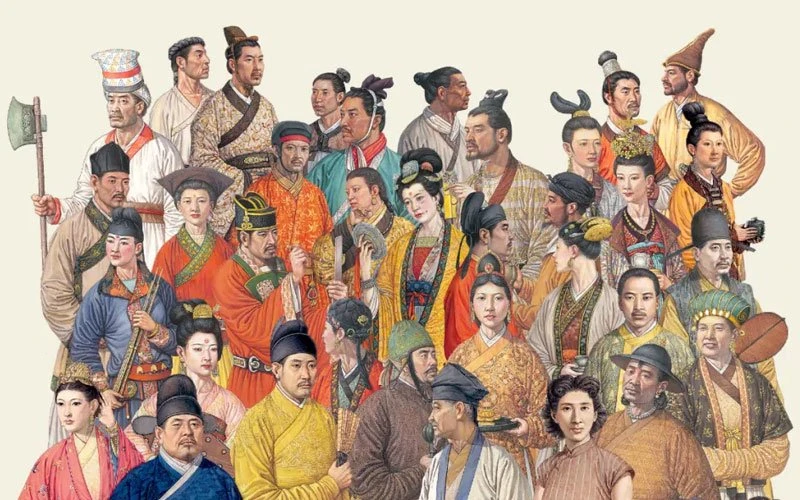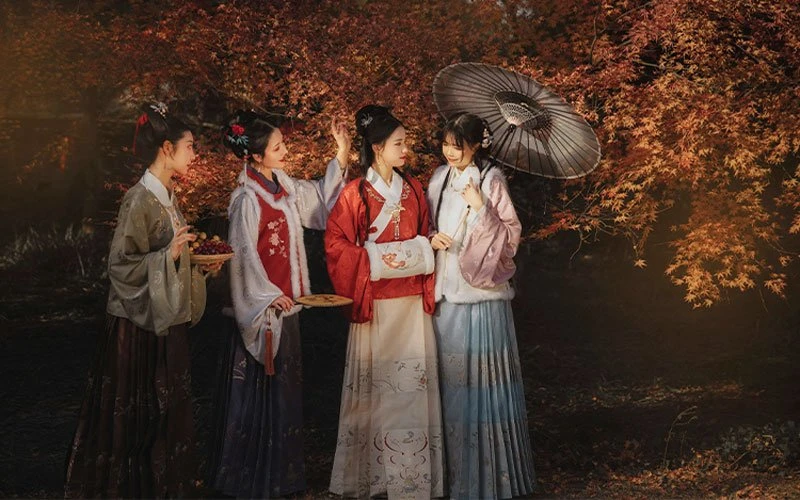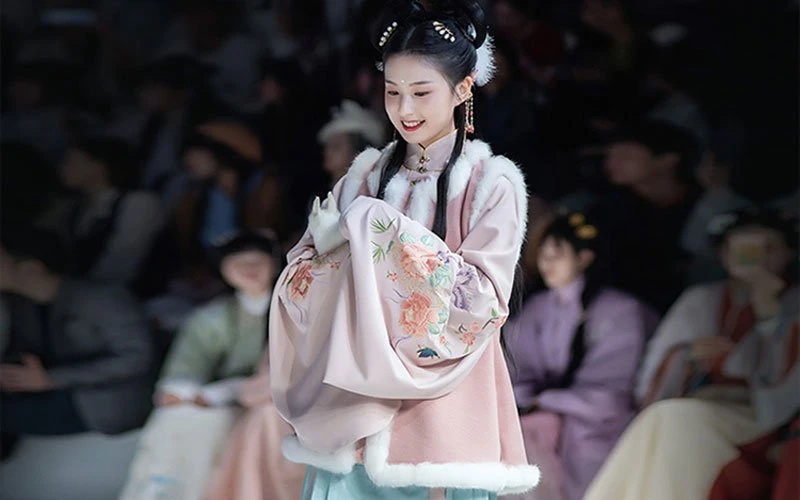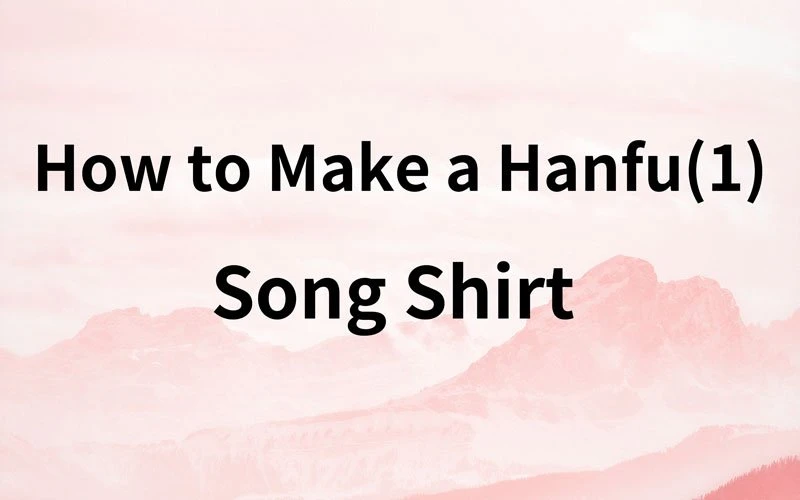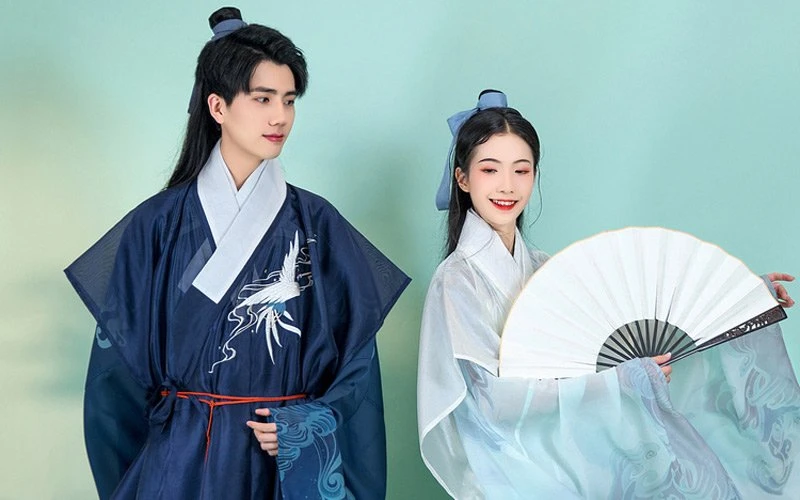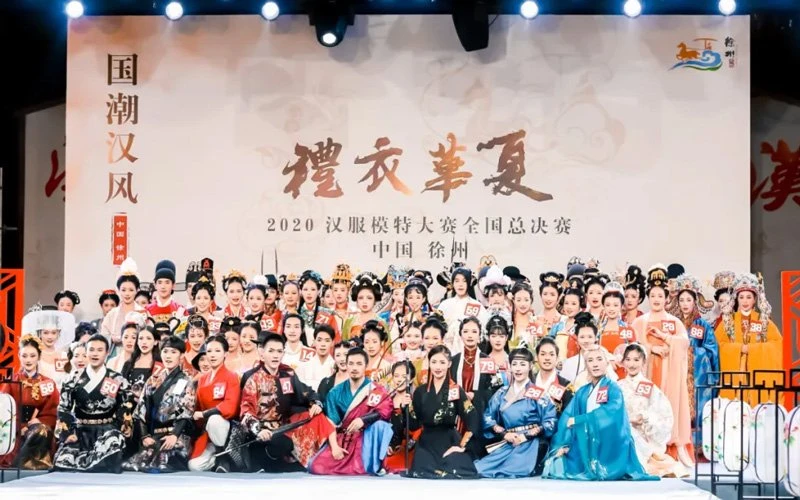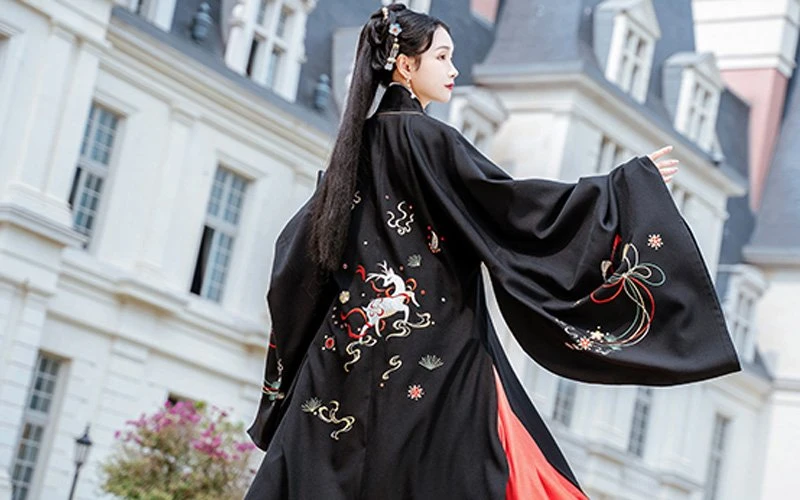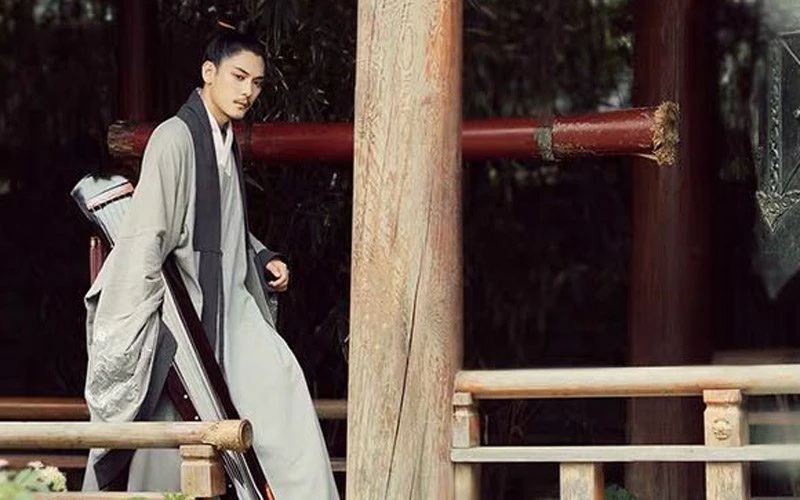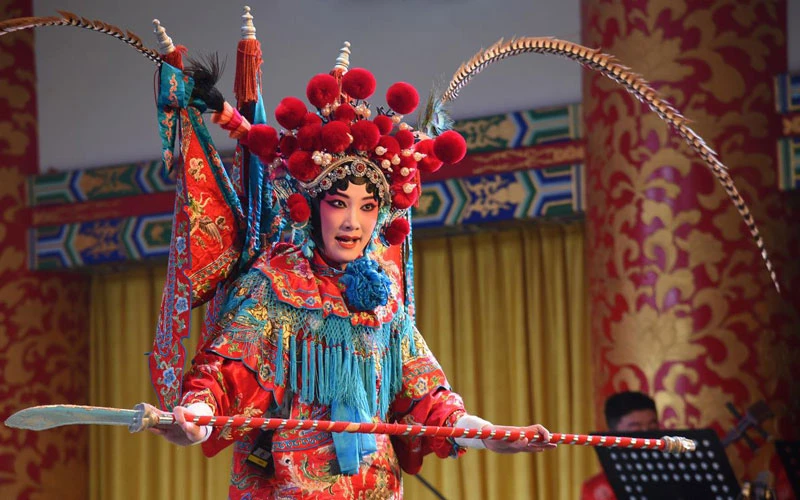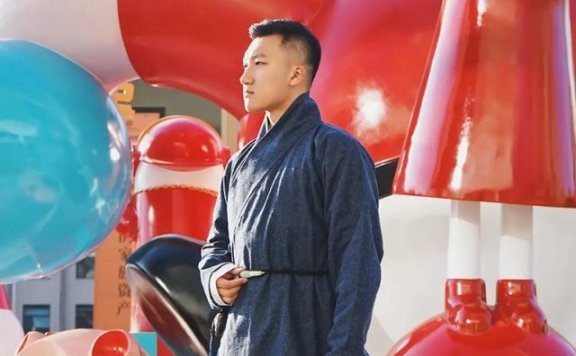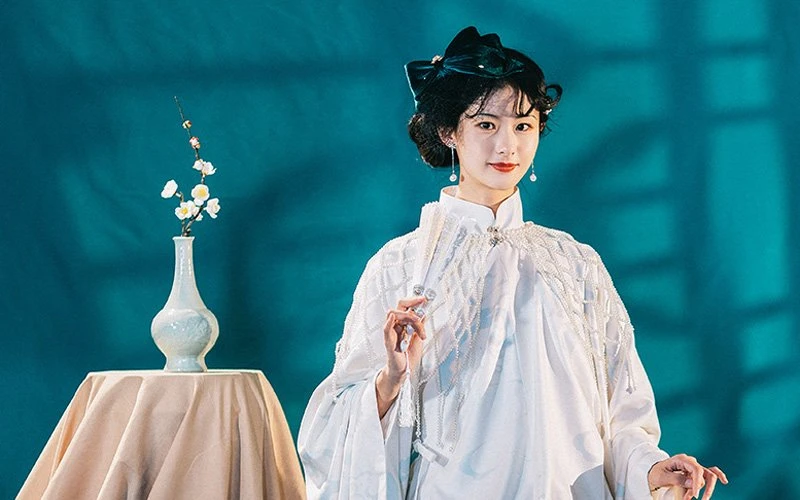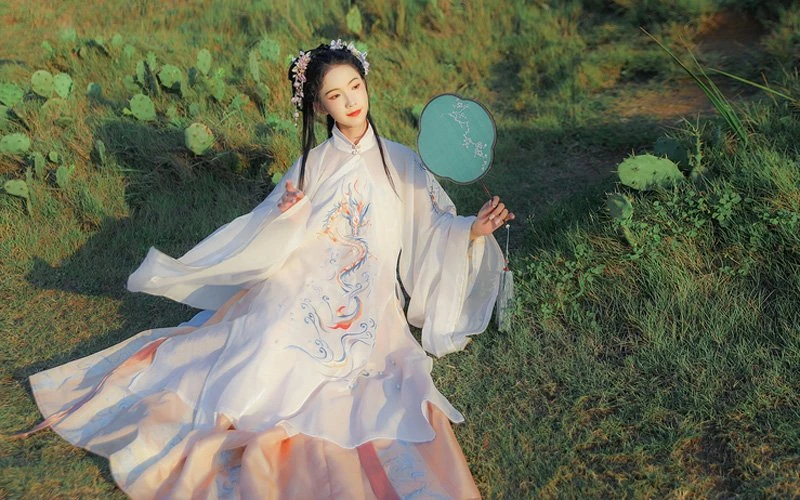Article
搜索结果:
-
Modern Hanfu Drawing & Cosplay - Restore the Tang Dynasty
The Tang Dynasty (from 618 to 907) was extremely important in the history of China. Many Chinese TV dramas and movies have been filmed with the Tang Dynasty as the background. We have introduced the costume culture of the Tang Dynasty before, today we will show you the beautiful makeup and the history of the rise and fall of the Tang Dynasty through the Hanfu drawing of illustrator @Yucha Guozi (御茶菓子) and the Hanfu model @Zhende Caicai (真的菜菜), present the stunning makeup and the history of the rise and fall of the Tang Dynasty, and feel the aesthetic spirit of the Tang Dynasty which is diverse, confident and inclusive. Early Tang dynasty: the first year of Wude: 618 AD (武德元年) Narrow-sleeved short garments were popular in the early Tang dynasty. The picture shows a double-bun maid, wearing a shawl collar, a half-sleeved garment with a long skirt, and a skinny shape. Gaozong period of the Tang Dynasty: 628-683 AD (高宗时期) Next is a "woman in men's clothing", during the Tang dynasty, women often wore men's clothing. This is because during the period of Gaozong, society gradually became more elegant and open, and the body shape that was favored… -
Ancient Chinese Fashion: Historical Prototype of Hanfu Style
With the movement and innovation of Hanfu, more and more new styles of Hanfu have appeared in our eyes, but those who are new to Hanfu may not know much about its style, so they don't know where to start to understand Hanfu style. Today, we have collected some basic styles of Hanfu and their corresponding historical prototypes, so let's experience the ancient Chinese fashion together. The Hanfu costume "began in Huangdi (黄帝) and was perfected in Yao (尧) and Shun (舜) ", and was styled in the Zhou Dynasty, and through the Han Dynasty, a complete system of headwear and costume was formed based on the Four Books and Five Classics. Duijin Ruqun (对襟襦裙, parallel collar) Ruqun is a top garment and skirt in Chinese, it is one of the earliest and most basic forms of Hanfu. "Ru", is a short garment, with collar style with parallel collar, crossed collar, or shawl collar (U-shaped collar). "Qun", is a skirt, is usually a one-piece or two-piece. The term "Duijin" refers to the symmetry of the left and right lapels of the Ruqun, and need wearing of an inner Moxiong(camisole). Duijin Ruqun was mainly popular in the Song Dynasty. Compared to other… -
Introduce of Hanfu Face Veil: Mili & Weimao
We often see the Chinese Hanfu face veil in Chinese movies and TV series, often bringing a sense of mystery, so today we're going to take a deeper look at it. Two Kinds of Hanfu Face Veil in Ancient China Mili (羃䍦, mi lí) Mili, a unique ancient hat ornament, was mainly used to conceal the face and body. It was first recorded in writing in the Jin Dynasty and was worn by both men and women at the beginning of its popularity, but it was mainly used by women in the Sui and Tang Dynasties and was abandoned in the Tang Dynasty. Weimao (帷帽, wéi mào) Weimao was originally a hu garment, originally called a Mili, which was usually made of black yarn, surrounded by a wide brim, with a hanging silkscreen or thin silk that reached down to the neck to cover the face. Usually, the length of the curtain is just long enough to show the shoulders. Historical Origins of Two Hanfu Face Veil Mi and Li were first used to refer to two items, namely, a silk scarf and a white cap respectively. It was not until the Jin Dynasty that the two words… -
Hanfu Drawing - Twelve Beauties of the Qing Dynasty
There are very many classical Hanfu drawing in ancient China, and the ancient painters used their brushes to record the scenes of life at that time, which also gives us the opportunity to get a glimpse of the splendor of the ancient costume culture through Hanfu drawing. The Twelve Beauties, now in the Palace Museum in Beijing, is a heavy-colored brush painting of figures by a court painter of the early Qing dynasty. Each painting has the same dimensions, 184 cm in length and 98 cm in width, and is painted on fine quality silk paper. The work is in the form of a single painting of a single person, each depicting the leisurely life of 12 ladies dressed in Chinese costume Hanfu in the court, but also a realistic approach to realistically reproduce the headdress, clothing, hairstyle, jewelry of women in the Palace of the Qing Dynasty. Today, after more than 270 years, this set of drawings is still intact, and has become the most vivid and true historical material for studying the culture of women's hairstyles, jewelry, and costumes in the court of the early Qing Dynasty. 01 The lady is dressed in a fur coat, wearing a… -
History of Traditional Chinese Hanfu Shoes
Hanfu shoes have a long history of development. About 5000 years ago, during the Yangshao culture, the most primitive shoes made of animal skin appeared. Shoes were the first tool for people to protect their feet from injury. Later, they gradually became a symbol of people's identity and status and witnessed many special historical processes. Brief introduction of Hanfu shoes In Hanfu, shoes are called Zuyi (足衣, clothes on feet), there are various styles of ancient Chinese Hanfu shoes and boots, and their development has gone through the process from scratch, from simplicity to complexity, from coarseness to precision. From the earliest function of warmth preservation and protection, it has developed into a symbol of identity and status. Through shoes and socks, we can see the integration and progress of the development of Chinese civilization. The earliest shoes came into being with the appearance of fabric materials and the appearance of clothes. In ancient times, the raw materials of shoes were grass, linen, and leather. Moreover, the style of shoes was rather simple. According to the literature, the earliest shoes, no matter what material they are made of, are collectively referred to as "屦, jù". After the Warring States… -
Composition of Song Dynasty Emperor's Clothing - Hanfu Culture
We have previously introduced the costumes of the Song Dynasty, but today we will introduce the emperor's clothing of the Song Dynasty using the TV series Qing Ping Yue (清平乐, Serenade of Peaceful Joy) as a backdrop. Qing Ping Yue is a complex and realistic restoration of the Song Renzong (宋仁宗) set in the Northern Song Dynasty. In this drama, Wang Kai (王凯), who plays the role of Song Renzong, basically restores from the appearance of the original costumes in the Taipei National Palace Museum collection of Song Renzong Seated Axis, the costumes, makeup, and props in the drama are very exquisite, and will bring you a brief analysis of the costumes on Song Renzong. Futou The story of the Futou(幞头) begins in the Tang Dynasty. The popular men's headwear of the Tang Dynasty was not a complete hat, but consisted of a square piece of fabric called "Futou" and a cane wood or wire mesh cover called "Jinzi". The Jinzi was used to cover the topknot of the hair, then the Futou was covered, the two corners were folded up and knotted, and the other two corners were knotted at the back of the head and made to… -
Yuanlingpao - Traditional Chinese Formal Robes for Male & Female
We have introduced several casual dresses from the Ming Dynasty (Zhiduo/Zhishen/Taoist robes/stand collar Hanfu shirt) before. This article will introduce the history of the Ming Hanfu robes Yuanlingpao and its use as a formal dress for grand occasions. On many traditional ceremonial occasions, the most popular dress set for men is the Wushamao and Yuanlingpao, and for women, is the Fengguan Xiapei and Yuanlingpao. Men's Formal Dress: Wushamao & Yuanlingpao [Structure and History] Wushamao (乌纱帽), is a Ming dynasty imitation of the Tang dynasty form of Futou (幞头), the shape is tall and dignified, behind the insertion of two straight and wide wings, mostly square or oval, can be said to be a standard issue for wearing Yuanlingpao. Yuanlingpao (round collar robes, 圆领袍), The origin can be traced back to the North and South dynasties and has been used as the formal dress of officials during the Tang and Song dynasties, and the round collar robes with Buzi (补子) were used as the regular dress of officials during the Ming dynasty and later as the formal dress of ordinary people. Yuanlingpao, also known as pan collar (盘领) Youren (右衽); with big sleeves; the body is slit below the waist… -
Ancient Chinese Robes for Men: Tieli & Yisan
We have previously detailed a few ancient Chinese robes from the Ming Dynasty (Zhiduo/Taoist/Zhishen), most of which are suitable for scholars, but today we will introduce you to 2 more martial styles ancient Chinese robes for men: Tieli & Yisan. You may often find these two classic Chinese costumes at Hanfu festivals or events, they are very eye-catching and handsome. Tieli (贴里) [History and characteristics of Tieli] Tieli is usually worn under a round-necked robe and Dahu (褡护, a type of clothing that belongs to the Banbi), which makes the wide hem of the robe slightly outward and dignified. Tieli is the Mongolian word for the robe and is an import from the Yuan Dynasty. After being inherited by the Ming Dynasty, the garment was lengthened, and the overall structure closer to Shenyi system of the Hanfu, and integrated the Han "orthodox" rituals, and later became the most common ancient Chinese robes, and is a common style of the Ming Dynasty officials (up to the Feiyu suit, down to military uniforms). Features of the Tieli include: Jiaolingyouren (交领右衽), the front and back of the garment are cut separates the top and bottom. Sleeves' styles are available in narrow and large,… -
Ancient Chinese Clothing Timeline - Hanfu Development
China has a splendid costume history, but the splendor of the ancients has gone with the years, and we can only recall it through historical records and archaeological discoveries. Fortunately, there is someone who can use his exquisite painting skills to rigorously and meticulously restore the ancient Chinese clothing and trace the history of the delicate and gorgeous. Today, we are going to share with you the ancient Chinese clothing timeline and experience the charm of Chinese clothing together. Shang Dynasty (c. 16th-11th century BC) Features: The main feature of the Shang dynasty dress is "upper garment, lower Chang (裳), Youren (右衽), hair bunch". The upper half of the body wears clothes, the lower half of the body wears Chang, Chang is the skirt. Noble men's dress (left): The head wears the tall Ge(葛) cloth crown. The Yue-shaped cloth hanging from the front abdomen was a sign of noble status, and was often referred to in later literature as the "Bixi (蔽膝)". The pattern on it is based on the Leiwen depicted on the Shang dynasty Yuge in the collection of the Palace Museum. The boots worn by the feet are painted on the basis of pottery boots excavated from… -
News | Experience of Traditional Chinese Clothing - Hanfu
At the 16th China International Cartoon and Animation Festival, the gathering of traditional Chinese clothing "Hanfu" becomes a beautiful scenery. CGTN reporter: Guo Meiping will take this opportunity to have the first experience of this gorgeous clothing. She also asked an industry expert: Huang Qiaoen - Founder of the Hanfu brand "Yuanshangiao" in advance to help her with the Hanfu experience at the"Chinese-style pavilion". Huang Qiaoen helped Guo choose the right Hanfu: "You are pretty tall, so a Hanfu in Ming Dynasty style probably suits you. Also, today is the Mid-Autumn Festival, so the outfit I'm recommending, exudes elements of this holiday." Guo asks: "What is the story behind the outfit I'm wearing?" "The outfit you are wearing is called 'Moon shining on the lake'. It's specifically designed for the Mid-Autumn Festival. You can find a lot of autumn elements on it." Huang starts to introduce this Ming-style Hanfu in detail. "The long gown you wear inside has a stand-up collar and surplice. The cloak is in the Ming Dynasty style and has a full moon at the back. There are also elements of chrysanthemum and Jade Rabbit, implying full happiness. We also added some cuter modern elements to the… -
The Autumn Hanfu Style - Chinese Costume for the Female
The cooler fall months are finally here, and there's no season with softer colors than fall. Have you figured out how to dress in this season? For a change of style for fall, choose classic and beautiful fall Hanfu. Let's see together what Hanfu Time brought Chinese costume for the female in autumn. 01 - Put on Golden Hanfu and Open Autumn Gold weaving is a common element in the Chinese clothing fabric, with the classic pattern of Zhuanghua silk (妆花, the most complex variety of Nanjing cloud brocade weaving process), a combination of the two, is the bling feeling, and gold weaving, as the name suggests is the fabric plus gold thread. In the Tang Dynasty, there were 14 kinds of gold weaving methods recorded in the literature, and in the Song Dynasty, there were also 18 kinds. The most prestigious gold-weaving dynasty is the Yuan dynasty, the noble life can be called extravagant, life with the daily quilt, curtains are also made of gold-weaving. As you can see, the weave is used a lot on the Mamian skirt and the Mamian skirt is perfect for the fall and winter season. 02 - Put on a Warm Bijia (比甲)… -
How to Make a Hanfu(1) - Song Shirt Sewing for Beginners
Today, we're sharing how to make a Hanfu clothing: Song Dynasty shirt. Let's DIY your own Hanfu. A Video explanation is available at the bottom of the article Sketch The characteristics of the Song-shirt are long sleeves and front opening. When wearing, the front can be folded. The length from the back center to the shoulder is 1/4 of the full length. For overlapping, 1/4BL(bustline)=25CM, armhole depth 23cm. Sleeves can be straight or narrow. Neckline width is 9cm, draw a vertical line in the direction of the hem at the shoulder neck points, i.e. the front. The front is almost straight. There's only a little radian around the corner of the neckline, you can make your front part bigger if you have enough fabric. Cut Prepare a piece of fabric firs. First, fold out the length of a garment along the direction of the weft line. Draw on the fabric at 1:1 size according to the layout you just drew. Cut the neckline, Be careful that the collar is a single layer, so don't cut the bottom layer off. Half of the body will be ready. Cut off the other half of the body symmetrically. Cut out two parts with… -
How Beautiful is Blue Hanfu in Traditional Chinese Hanfu?
As one of the aspects of human civilization, the color culture in traditional Chinese Hanfu costumes has a long and splendid history. The color of clothing is often a symbol of the times and has strong political significance, and is closely related to the "five colors" that prevailed at that time. Today, we will lead you to have a deeper understanding of the "blue Hanfu". The Meaning and Place of Blue in Ancient Color Culture The so-called " Five Pure Colors" originates from the five elements, which are metal, wood, water, fire, and earth, and represent the five pure colors of blue, red, yellow, white, and black in the five directions of east, south, middle, west, and north. According to I Ching, black is the color of the sky and yellow is the color of the earth, which is why it is said that "the sky is dark blue and the earth is yellow".In addition, The Book of Rites recorded that in ancient times, the pure color was considered noble, and the color that combined two primary colors were considered inferior, and the pureness of clothing was highly valued. Blue in the five elements corresponds to the Eastern wood,… -
2020 Hanfu Model Contest National Finals held in Xuzhou
The 2020 "Liyi Huaxia (礼衣华夏)" Hanfu Model Contest lasted for more than 4 months, covering 76 cities in five regions, with 468 Hanfu associations and more than 6,200 contestants actively participating. The aim of the competition was to recreate the splendor of Chinese costumes and promote Chinese etiquette through the visible, wearable, and popular carrier of Hanfu. After three rounds of competition, 80 finalists from various regions were selected and the top 10 were born in Xuzhou. Xuzhou, located in Jiangsu province, has many historical and cultural treasures such as the Han tomb of Guishan, the mausoleum of the King of Gefengtai, and the Chinese pictorial stone, etc. In recent years, Xuzhou is committed to the inheritance and promotion of Chinese culture, transforms and develops creatively the symbols of Chinese culture such as Hanfu, Han rituals, Han music, and Han dance. The culture of Hanfu is gradually integrating into the life of ordinary people and is closely related to the cultural construction of the city. It is for this reason that the final of this popular national competition is held in Xuzhou. The finals are divided into three rounds: grooming, self-selected style, and stochastic expressivity. In the first round, 80… -
Hanfu Sewing Pattern (1) - Pifeng Cutting Diagram & Making
Diy crafting is a lot of fun, and not only can you be fully engaged in the process, but it's also very rewarding to finish a piece with your own hands. The same goes for making your own Hanfu, which is why we've launched this series, will continue to update the Hanfu sewing pattern and process of making different styles of Hanfu for you in the future. Introduction to Pifeng Hanfu Pifeng(披风, cape) is a form of Chinese Hanfu clothing, mostly straight-necked, Duijin (对襟), with two long sleeves, with slits under both armpits, can be worn both indoors and outdoors. From many portraits as well as notes on the data, Pifeng used to be a popular clothing style of the Ming Dynasty. Sewing Pattern Explained - Making Cuts Tutorial The Pifeng shape is not complicated, and those who like to make Hanfu or DIY Hanfu dress can try to make it if have the right fabric. Overall: A/B/C/D equal width, 50~60cm Cuff width 30-60cm (depending on sleeve size) Width of sleeve heel 30~40cm The collar is opened to the level of the armpit, and the width of the collar opening is twice as wide as the width of… -
Daopao - Ming Style Hanfu Taoist Robe
What is the image that comes to your mind when you think of a Taoist robe? Is that a priest's robe? Or a Japanese cardigan? When we talk about traditional Chinese Hanfu, Taoist robes are usually referred to as one of the men's traditional Chinese costumes, also popular among the Ming Dynasty scholar's costumes. If there is any style of men's Hanfu that can be versatile, the robe must be the obvious choice. As you can see from its appearance, it is a very stylish Chinese man costume. Different styles of Taoist robes are suitable for people of all ages and temperaments, and Taoist robes with different clothing accessories will bring a completely different visual experience, which can be said to be the essential clothing for boys who are new to Hanfu. We'll start with a few photos to get a visual of the contemporary traditional Taoist robe. So let's learn more about the Daopao together! [Structure and History of the Taoist Robe] Taoist robe, once popular in the mid to late Ming Dynasty, developed from an earlier garment called "Zhe (褶)"; The collar shape is Jiaoling Youren (交领右衽), most collars will have an extra Huling (护领) sewn into them;… -
4 Chinese Traditional Performing Arts You Need to Know
China is an ancient multinational country, with a long history and brilliant culture. For thousands of years, many abundant forms of traditional performing arts have been formed under the wisdom and industriousness of workers. Each art form has various styles and schools, including opera, puppetry, Chinese shadow, acrobatics, and quyi. Chinese traditional performing arts are important representatives of the national spirit, showing the quintessence of ancient culture, and some of them are registered in the list of Intangible Cultural Heritage of Humanity. Opera China's opera, enjoyed incomparable fame, is known as one of the world's three ancient dramatic cultures, the others being Greece's tragicomedy and India's brahman drama. It is an art form of long history, originating from primitive song and dance. With steady development, it has become a complete system in the Song and Jin dynasties. It is composed of literature, music, dance, fine arts, wushu, and acrobatics, nearly 360 kinds. As it evolves and innovates in the long run, the five most distinguished types of operas appear: Beijing opera, Yue opera, Huang Mei opera, Pingju opera, and Yu opera. History of opera In primitive society, original singing and dancing arise in the tribes. In fact, the ancient tradition… -
Details of Zhiduo - Ming Style Hanfu Jacket
If you like Hanfu, you may have seen all kinds of Hanfu jacket, But maybe you can't tell the difference between Zhiduo (直裰), Daopao (道袍), and Zhishen (直身), because they all look almost the same from the outside, but in fact, there are a lot of differences in the details, so let's get to know the "Zhiduo" today! [Structure and History of the Hanfu Jacket: Zhiduo] Zhiduo (直裰, also be called 直掇), has several key features: The collar shape is Jiaoling Youren (交领右衽, mean: crossed collars, tying to the right), Can be sewn a Huling (护领, sewn-on the collar area, mostly white and varying in width, to protect the collar from wear and tear and stains. In ancient times, the Huling was easy to dismantle and often replaced. Most of the Huling in contemporary Hanfu costume is preserved as a traditional feature.) on the collar. The making method of Zhiduo: Tongcai (通裁, cut in one piece, no seams on top and bottom). Usually narrow sleeves, but also straight or pipa sleeves. It is knee-length, and the length of the garment and the width of the sleeves vary according to the wearer's needs. The body of the garment is slit… -
East Meets West - Hanfu Mix-Match Dressing Tips
With the trend of Hanfu, more and more girls are joining the Hanfu camp, but with the appearance of Hanfu homogenization, many girls are no longer satisfied with the current Hanfu wear, began to mix-match, mixing different elements together (for example, modern fashion elements and classic elements), look fashionable and generous. 1. What is "Western" and "Eastern" mixing? What is a mix of "Western" and "Eastern"? This is what we call "East meets West" style, just like the modified cheongsam, which combines Western modern elements with Chinese classical elegance, that is, East meets West style. The model in the picture is the extreme use of this style, grasping the essence, the Chinese Hanfu horse-face with Western-style hat and lace gloves combined with the wearing, actually has a different kind of elegant debutante style, compared to the traditional Chinese clothing collocation, appears more daily and modern. 2. How to mix-match to give more points to the overall image? ①How to choose Hanfu style? Due to the profoundness of Chinese culture, there are many different types of Hanfu, such as Tang, Song, Ming, etc. However, in order to better combine with the fashion elements, it is often better to choose the plain… -
4 Sets of Hanfu Suits for Autumn - Elegant & Gorgeous
This summer is all about Song style Hanfu suits, which is both classic and fresh. But now it has slowly entered the autumn, it is also time to change the Chinese clothes in the wardrobe into more stable and atmospheric Ming Dynasty Hanfu. Ming-style Hanfu suits is a kind of shape for autumn and winter. Wearing it can set off people's dignity. For younger girls, you can choose a more playful style of Ming Hanfu, like this pairing of a short Ao (袄) with pipa sleeves and a horse-faced skirt, with a green short Ao embroidered with exquisite osmanthus flowers and jade rabbits. And the lower half, the horse-face skirt is also the same embroidery pattern, the fabric of this horse face skirt is also very light yarn fabric, this kind of fabric is more girly than ordinary fabric. Since the embroidery theme is a jade rabbit, plus it is a thicker Ming Hanfu, this set is perfect for the Mid-Autumn Festival. Although the style of this set is relatively fresh in Ming Hanfu, the overall look is still much more dignified than the standard Hanfu style. *What is the Pipa sleeve? The pipa sleeve is a type of sleeve,…
